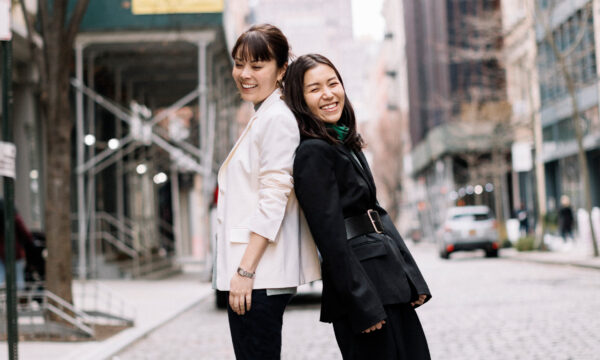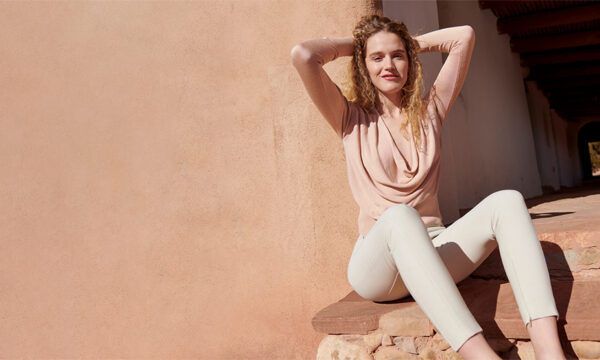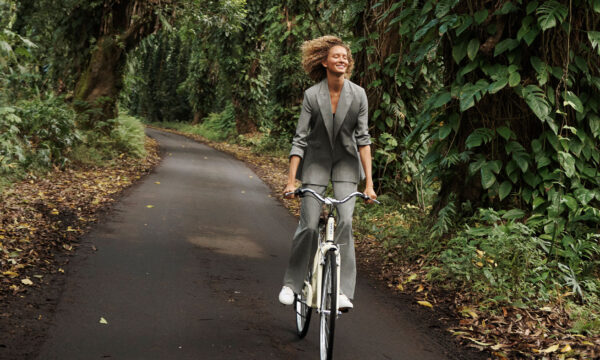
The Cassandra dress and Milo jeans.
What’s the difference between a slit and a vent? Is “monotone dressing” as boring as it sounds? And what is a sheath dress, exactly? We put together a guide to help you decode all the fashion-designer jargon that’s made you say “huh?”—and some terms you didn’t even know were missing from your lexicon.
Want more M Dash?
Sign up for our weekly newsletter.
Thank you!
COLUMN DRESSING
This is a fancy word for a type of outfit you’ve definitely worn without realizing it had a name. A column outfit consists of a top and bottom—or a dress/jumpsuit—that are the same color, with a layer in a contrasting color. The single-color base creates a streamlined, lengthening “column” effect, emphasized by the contrasting layer on top.
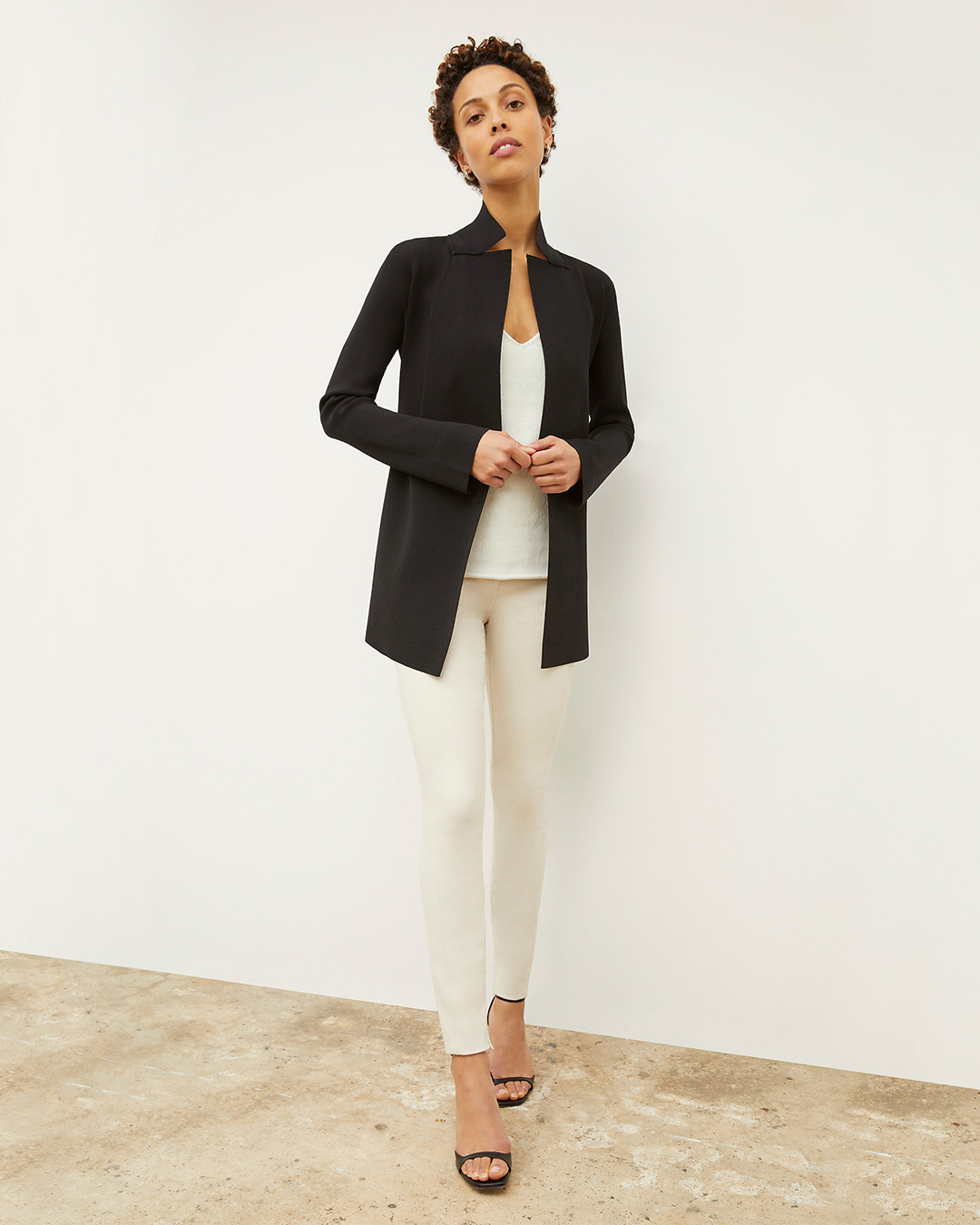
The Merritt jardigan, Lisey cami, Stella leggings, and Ella sandals.
MONOTONE DRESSING
A monotone outfit is made up of pieces in the same shade of the same color. You can keep things classic by using a neutral like black or cream as your color of choice, or choose something brighter for a bolder look. The best thing about monotone looks? They’re easy to pull off. “When in doubt, go monotone,” says our Brand Stylist, Nyjerah. “These looks are best for those nothing-to-wear moments when you’re feeling uninspired. Dressing in monotone helps elevate a simple outfit because the color becomes the statement. It has a similar type of ease to our Etsuko dress, which is already put-together and doesn’t require extra styling—the uniform color does the work for you.”

The Rory cardigan, Shiloh pants, and Ella sandals.
MONOCHROMATIC DRESSING
A monochromatic look—also known as a “tonal look”—uses different variations of the same color. Unlike a monotone outfit, a monochromatic outfit combines pieces that are not the same shade.

The Mori henley, Foster pants, and Lyssa earrings.
COLOR-BLOCKING
A color-blocked outfit juxtaposes two or more solid colors—usually bold ones. Some garments have built-in color-blocking, but you can also achieve the look by wearing a contrasting top and bottom. If you’re having trouble finding colors that pair well, Nyjerah recommends adding in a neutral. “Traditionally, color-blocking meant pairing two or more colors that are opposites on the color wheel—combinations that many would say clash,” she explains. “But nowadays, stylists will pair any two bold colors to create a contrasting, color-blocked ensemble.” Color-blocking also allows you to choose which features to emphasize. For example, if you want to show off your shoulders, try pairing a bright top with more muted bottoms—brighter colors stand out, while deeper shades tend to recede.

The Mori henley, Milo jeans, and Ella sandals.
FRENCH TUCK
A.K.A. the half tuck. This Tan France-approved styling trick gives your outfit definition and dimension while feeling a bit more relaxed than a full tuck. It’s also great for thicker tops and sweaters that are too bulky to tuck in all the way around.
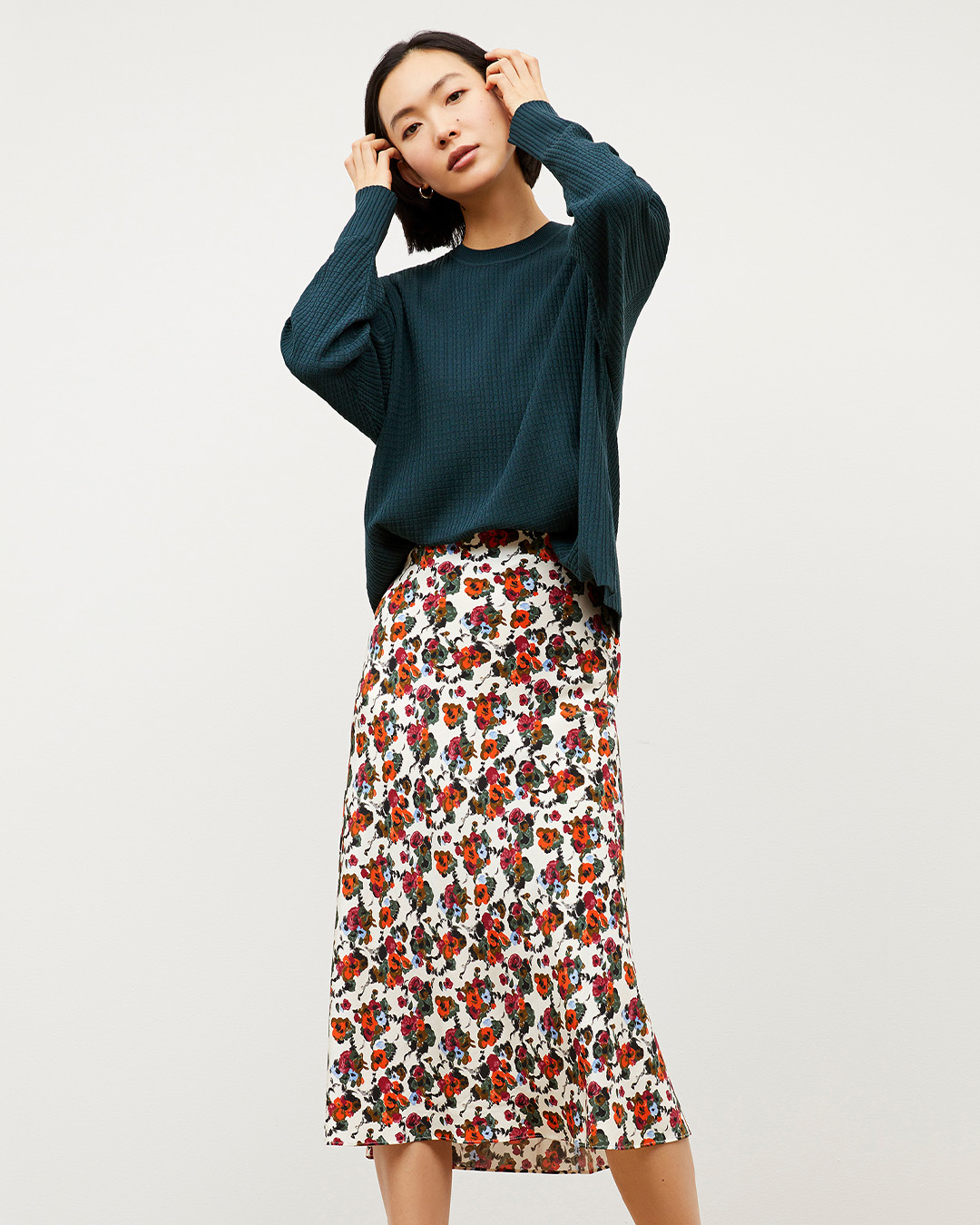
The Tyler sweatshirt and Orchard skirt.
A-LINE
The name “A-line” comes from the shape of the capital letter A. A-line styles are typically fitted at the waist and fuller through the hips, and they can range from very subtle—for when you want just a bit of room in the hips—to quite pronounced—for when you want to practice your twirl.
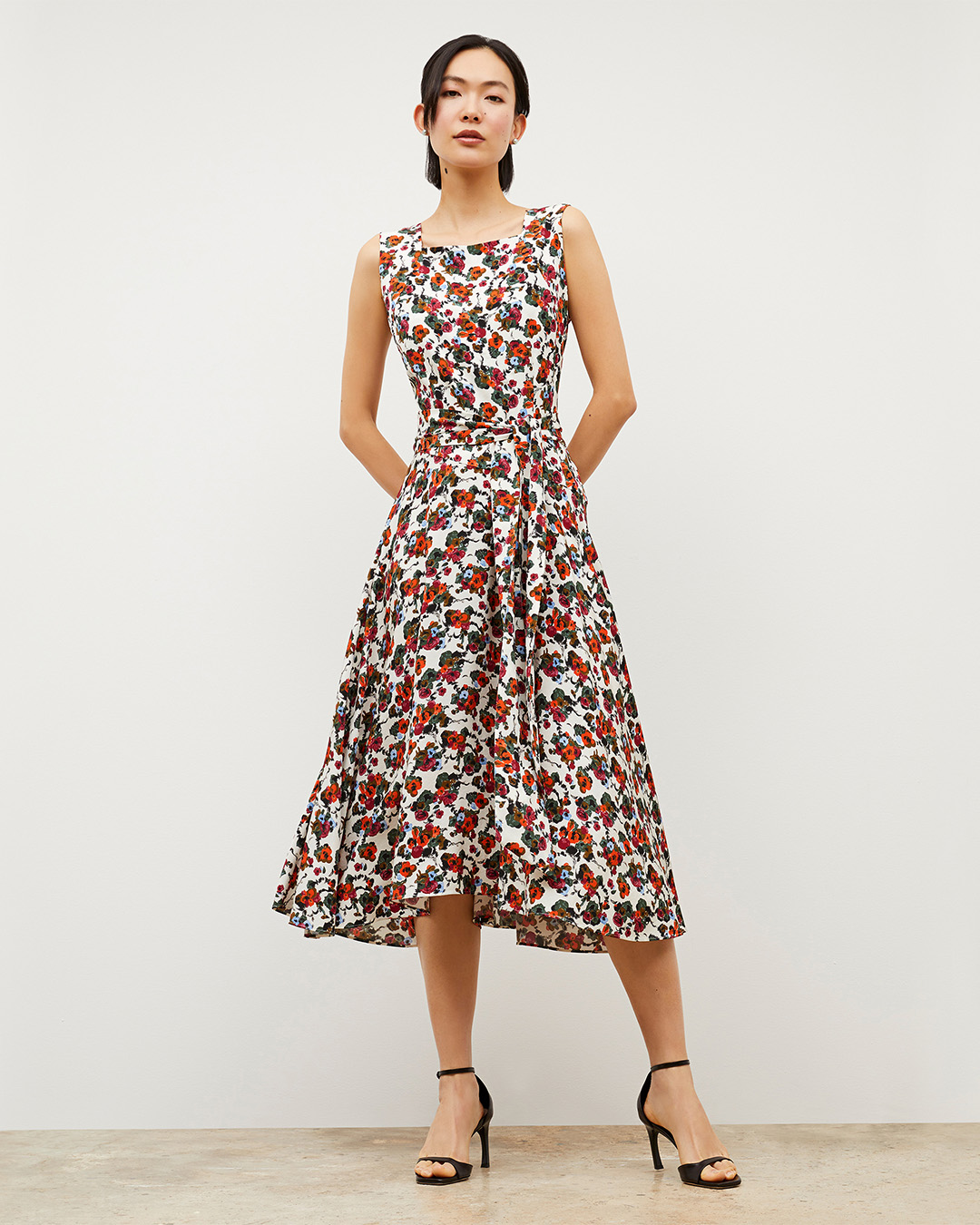
The DiemMy dress and Ella sandals.
SHEATH
The term “sheath” gets tossed around a lot. But typically, it refers to a straight-cut dress (no A-lines here!) with a close fit throughout the body. “Sheath dresses have elongating silhouettes,” explains Nyjerah. “And since they sit close to the body, they’re ideal for easy layering. I like to complement the length with a longer layer, such as our Jensen trench, or use our cropped Sant Ambroeus jardigan to break up the silhouette of a sheath.”

The Constance dress.
SHIFT
A shift dress also has a straight silhouette, but it’s not as close-fitting as a sheath. Rather than tapering at the waist, a shift dress falls straight down for a more relaxed fit. This is a good choice for when you want to get creative with styling. As Nyjerah explains, “You can treat a shift like a blank canvas to create the shape you want. Belt it for waist definition, or pair it with another oversized silhouette to play on its shape.”

The Edith dress and Ella sandals.
DROP SHOULDER
When a garment has a dropped shoulder, the sleeve extends seamlessly from the bodice, creating a soft, relaxed look. (In contrast, more fitted tops and dresses tend to have seams that sit directly on top of the shoulders.) Drop shoulders are designed to create volume without bulk—plus, they make tops and dresses extra comfortable.
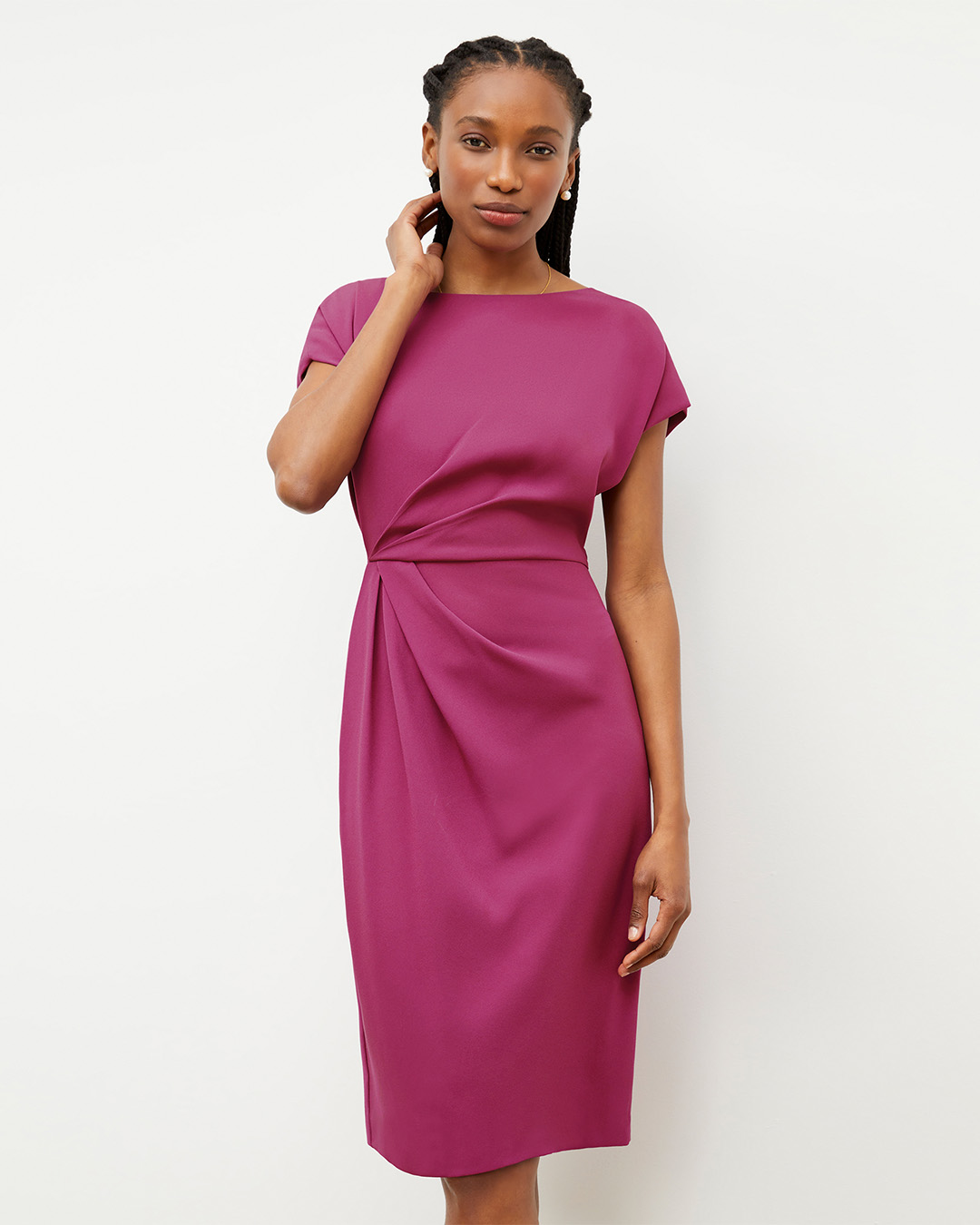
The Jillian dress.
SLIT VS. VENT
You may be surprised to learn that slits and vents are not the same thing (I certainly was). A slit is exactly what it sounds like—it’s as if you took scissors to your garment and cut in a straight line.

The Cassandra dress and Yayoi earrings.
A vent, on the other hand, consists of two overlapping pieces of fabric that are tacked at the top and open at the bottom. Vents are more traditional than slits and most commonly used in suiting. Some pieces use a double vent for extra mobility—and a bit of flair.

The Danica dress and Ella sandals.

The Cassandra dress.





